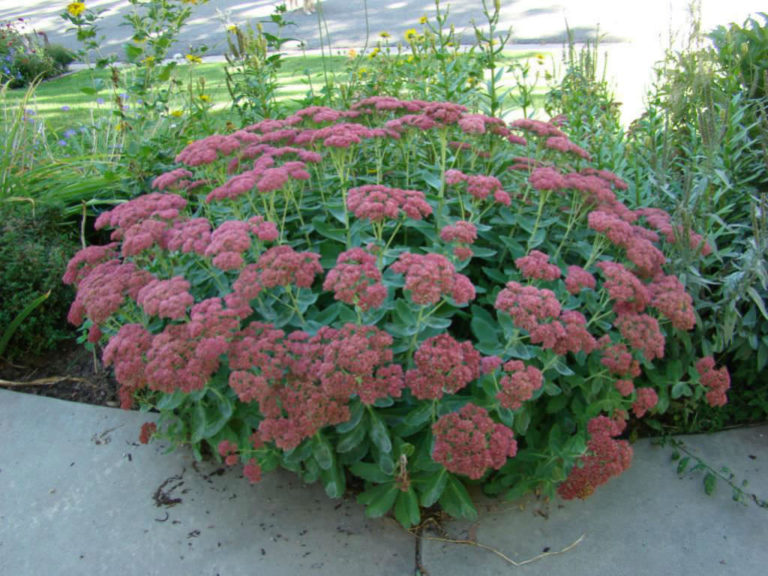
- AUTUMN JOY SEDUM POISONOUS TO DOGS HOW TO
- AUTUMN JOY SEDUM POISONOUS TO DOGS SKIN
- AUTUMN JOY SEDUM POISONOUS TO DOGS FULL
Is sedum Adolphii toxic to dogs?īetween 400 and 500 species of Sedum plants are native to the Northern Hemisphere. It also looks great in containers (inside or out), as well as in borders and rock gardens.Īphids, mealybugs, nematodes, scale, slugs, and weevils are among the insects, diseases, and other plant pests that can cause problems. ‘Autumn Joy’ can be used as a single specimen or in small groupings.

Very young and sensitive stems and leaves can be eaten uncooked, despite their low toxicity if consumed. Plants should be clipped or pinched back in early spring to keep their bushy shape and robust stems. It can be harmed by too wet or fertile soils.
AUTUMN JOY SEDUM POISONOUS TO DOGS FULL
Sedum needs full sun and well-drained soil to thrive. Browned flower heads are very eye-catching in the winter. The blossoms turn red as the summer progresses, attracting butterflies and bees. Round, fleshy green leaves appear in the spring, followed by light pink flower buds in the summer. The cultivar’Autumn Joy’, in particular, has year-round decorative appeal. Sedum is a dependable and gorgeous succulent perennial flower that originated in China and belongs to the Crassulaceae (stonecrop) family.
AUTUMN JOY SEDUM POISONOUS TO DOGS SKIN
Health Benefits: They’re said to help with coughs and blood pressure, and they may be used on the skin to treat burns, wounds, hemorrhoids, and dermatitis, however there’s no evidence to back up these claims. The leaves, stems, and tubers of red flowering sedums can be eaten raw in salads, but yellow flowering sedums have a slight toxicity and must be cooked. It can be eaten raw or sautéed to reduce the harshness. However, consume them in moderation because eating too much can induce stomach distress. Their leaves have a moderate peppery, bitter flavor that goes well in salads and stir-fries. There are up to 600 different kinds of flowering succulents, generally known as sedums. Avoid putting any toxic sprays on your plants if you have a dog who likes to nibble in the garden. This list is not exhaustive, and you should consult your veterinarian just to be sure. According to the Animal Poison Control Center and the ASPCA, sedum, carex, and artemesia are not on the list of hazardous plants for dogs. This involves carefully considering what we plant in our gardens. Hello, Jan: We have a responsibility to protect our four-legged pals as pet owners. There are a few succulents that are poisonous, but sedum is not one of them. Sedum leaves, often known as bittercress, have a moderate peppery, bitter flavor. Sedums are a genus over 600 plants that are generally non-toxic to both pets and humans. This low-maintenance plant is ideal for rock gardens, rock walls, ground cover, edging, and indoor/outdoor container planting. The stem will root very easily, and a new plant will be established in a season or two.Sedum, often known as stonecrop, is a succulent perennial plant. If you would like to further ensure that the plant will start there, you can add a very thin covering of soil over the plant.įor taller sedum varieties, you can break off one of the stems and push it into the ground where you would like to grow it. They will send out roots from wherever the stem is touching the ground and root itself. For shorter varieties, simply laying the sedum on the ground where you want it to grow is normally enough to get the sedum plant started there. Overwatering and overfertilizing can hurt the plants far worse than not watering or fertilizing. Sedums need no additional water or fertilizer. Make sure the sedum that you plant is suited to your hardiness zone. Many are hardy to USDA zone 3, while others need a warmer climate. Sedum varieties also vary in their hardiness. The large majority of sedum varieties are shorter, and sedums are frequently used as groundcovers in xeriscape gardens or rock gardens. The smallest are just a few inches (8 cm.) tall, and the tallest can be up to 3 feet (1 m.). A common name for sedum is stonecrop, due to the fact that many gardeners will joke that only stones need less care and live longer. They are ideal for that part of your yard that gets too much sun or too little water to grow anything else. They will thrive in conditions that many other plants thrive in but will do just as well in less hospitable areas.

When growing sedum, keep in mind that sedum plants need very little attention or care.
AUTUMN JOY SEDUM POISONOUS TO DOGS HOW TO
Learn more about how to grow sedum in the article below. With a large number of sedum varieties to choose from, you will find one that works for your garden. Growing sedum is easy so easy, in fact, that even the most novice gardener can excel at it.

There are few plants more forgiving of sun and bad soil than sedum plants.


 0 kommentar(er)
0 kommentar(er)
